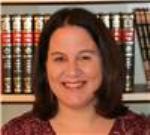Jun 22 2010
Researcher Michal Isaacson, a young doctoral student who works with Dr. Noam Shoval of the Hebrew University’s Geography Department, has demonstrated that GPS can also be used commercially for evaluating patient recovery after surgery and better dealing with shopper or crowd management.
Isaacson’s research assumes a significant role in gaining an insight into activities of persons under different scenarios like tourist locales, urban areas, national parks, shopping malls, and theme parks. Her concept has been tested for evaluation of crowd flow and activity in Spain’s Port Aventura theme park.
 Hebrew Michal Isaacson, a doctoral student working with Dr. Noam Shoval of the Geography Department at the Hebrew University
Hebrew Michal Isaacson, a doctoral student working with Dr. Noam Shoval of the Geography Department at the Hebrew University
For her research, Isaacson was awarded the first prize during the Kaye Innovation Awards’ competition at the Hebrew University. The prizes were presented during the Board of Governors meeting of the University on June 9. Isaacson’s work has been published in a book that she co-authored with Dr. Shova. Leading geographic journals have also published her work.
The system records the location of a person over a particular time period by using the GPS technology. In this duration, participants were made to carry a small GPS system. A time/space analysis computerized engine was used to analyze the tracking data for developing maps that depicted the activity volumes in the location, along with charts to show how different type of persons acted in the location.
It will be possible to analyze in real time the data that was received using tracking technologies for developing a radar that portray activities of people in a destination. Real time analysis can enable efficient and dynamic management of attractions so that it is possible to increase the number of persons who visit a tourist site in a given time duration and thereby increase revenue collection. Such data can also transform the manner in which attractions are being planned and effectively future additions.
The technology is also useful for medical applications. In collaboration with Hebrew University-Hadassah Medical School’s Dr. Yair Barzilay, a technique was developed to detect patient’s mobility of patients after surgical operation to track their recovery and well-being.